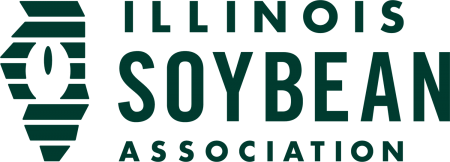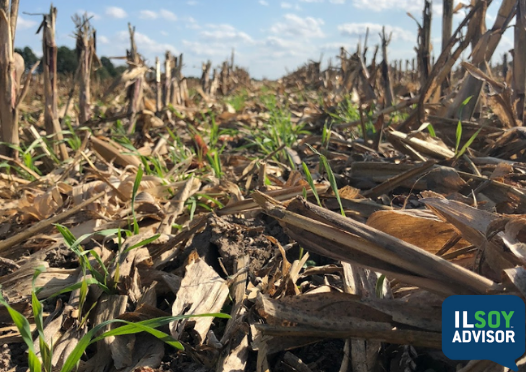ILSOYADVISOR POST
Agronomy: Fall Nitrogen and Soil Temperatures—We Aren't There Yet
With fall harvest wrapping up about two weeks earlier than normal, many farmers are anxious to start fall tillage and fertilizer applications. However, ISA and the Illinois Fertilizer and Chemical Association (IFCA) are asking farmers to be patient and wait until conditions are better for fall anhydrous ammonia applications.
According to an IFCA Regulatory Alert issued October 20, “No one should be applying anhydrous ammonia right now.”
The Illinois Agronomy Handbook, based upon actual field research, requires fall fertilizer applications to wait until the daily maximum soil temperature falls to 50 degrees or below.
“The basic reason for this is that the bacteria that convert ammonium to nitrate are active until the soils freeze,” says IFCA President Jean Payne. “Even with a nitrification inhibitor, which we also recommend, you will have less loss and more benefit from the protection an inhibitor provides if you wait,” says Payne.
“Applying anhydrous ammonia before soils hit the 50-degree-threshold increases the loss potential and we are focused on reducing nutrient losses in Illinois. Lost nitrogen not only penalizes the farmer, but creates an expensive problem for someone else downstream if they have to treat water to remove the nitrate,” Payne says.
Watch Those Soil Temps
Click here to view the latest daily maximum soil temperature.
When checking the soil temperatures on the State Water Survey website, Payne cautions farmers to check the daily maximum temperature at 4 inches in bare soil … not the minimum temperature.
“While it's true that minimum soil temperatures have been as low as 50 degrees, they rebound quickly in these warm days and with sunshine on bare soil,” says Payne. “The daily maximum temperature has never been below 60 degrees in nearly the entire state, and growers really need to wait until maximum daily temps fall below 50 degrees,” Payne adds.
Nutrient Loss Reduction Strategy
The Illinois Statewide Nutrient Loss Reduction Strategy (NLRS), released earlier this year by Illinois EPA, calls for a 15 percent reduction in nitrogen load and a 25 reduction in phosphate load by 2025.
To achieve the loss reduction goals outlined in this strategy, Payne says we all need to continue working to reduce losses from all sources. Illinois farmers and their retailers must commit to continuous improvement when it comes to managing nutrients, in particular on tile-drained fields. That includes following the 4Rs of nutrient management—Right Rate, Right Source, Right Time and Right Place.
It All Goes Somewhere
Remember that when nitrogen is lost to the environment, it doesn't just disappear. It goes somewhere, often ending up in lakes, rivers and streams. So it isn’t about just losing nitrogen for crop production, it’s about agriculture’s overall liability for what ultimately happens to the nitrogen that is lost. Keeping it from being lost by following the 4Rs eliminates both of these costly scenarios.
“We cannot stress enough how closely people are watching us and hoping that we all do the right thing,” says Payne. “It is up to us to do the right thing when it comes to fall fertilizer applications this year.”
Waiting to apply fall anhydrous and other steps can help demonstrate agriculture’s voluntary commitment to nutrient stewardship.
Learn more about simple ways to reduce losses and increase nutrient utilization.
And click here to learn more about ISA sustainability efforts and the NLRS.





Comments
Add new comment